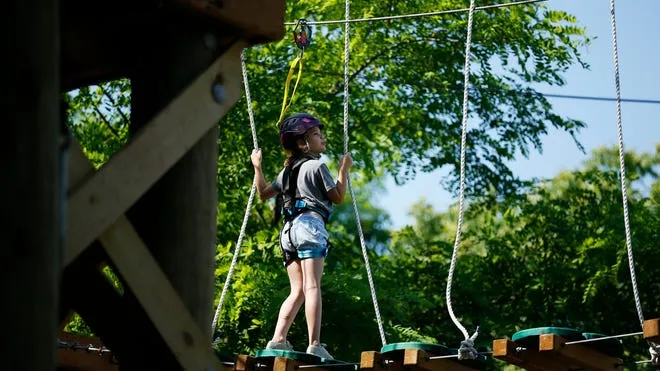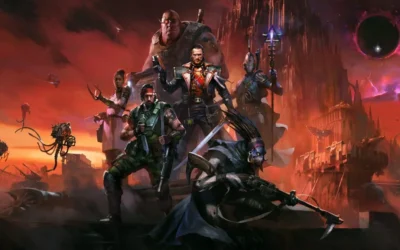The Cincinnati Zoo, an esteemed institution in the world of zoological conservation, has had an eventful year, facing challenges and triumphs alike. Among the year’s significant developments is the permanent closure of the Kanga’ Klimb adventure course, an attraction that has entertained countless visitors but is now closing its doors for good. Simultaneously, the zoo has been celebrating groundbreaking successes in conservation efforts as illustrated by the hatching of an extinct-in-the-wild chick and the historical return of a rare species to its former habitat.
As we delve into these recent events, it’s crucial to consider what they mean for the future of the Cincinnati Zoo and the broader implications for wildlife conservation.
The Closure of Kanga’ Klimb
The Kanga’ Klimb adventure course was designed as an interactive playground resembling the Australian outback, allowing visitors, especially children, to engage with the environment in a playful manner. Opened several years ago, it provided a unique opportunity to educate guests about kangaroos and the ecosystems they inhabit.
However, the zoo announced the closure of Kanga’ Klimb in 2023, citing changing priorities in public engagement and education. In a statement, the zoo expressed gratitude for the many guests who enjoyed the course but noted that “the need for updates and maintenance significantly outweighed the benefits.” The decision also comes in the wake of a broader trend in zoos and public attractions to prioritize sustainable experiences that align more closely with wildlife conservation and awareness.
The closure has sparked mixed reactions among the community. While some visitors are disappointed, others understand the need for the zoo to evolve and adapt to current conservation needs. Many are looking forward to seeing what new initiatives the zoo will introduce in the future, hoping they will continue to foster a love for wildlife.
A Momentous Hatching: The Extinct-in-the-Wild Chick
In contrast to the closure of Kanga’ Klimb, one of the most momentous highlights of 2023 has been the hatching of a chick from a species declared extinct in the wild. The Cincinnati Zoo has been an active participant in global conservation efforts, and this recent success illustrates the vital role zoos play in preserving vulnerable species.
The species in question, the Spix’s Macaw, was declared extinct in the wild in 2000 due to habitat destruction and illegal trapping. In recent years, thanks to extensive breeding programs and reintroduction initiatives, zoos worldwide have focused on reviving this beautiful bird population. The Cincinnati Zoo was fortunate enough to welcome a chick, a landmark event for conservationists and an exciting moment for visitors who often look to the zoo as a place of education, hope, and new beginnings.
Zoo representatives shared that this chick’s birth is not just a win for the Spix’s Macaw but also a symbol of what can be achieved when organizations, scientists, and conservationists collaborate. As the zoo celebrates this historic hatching, local residents and wildlife enthusiasts are equally elated. Many are eager to follow this endangered species’ journey, as it represents a second chance for a bird that has faced tremendous adversity.
The Return of a Rare Species
Another triumph spotlighting the zoo’s commitment to conservation came with the successful reintroduction of a rare species back into its natural habitat. Following collaborative efforts with local organizations and conservation biologists, a population of the endangered Madagascar Radiated Tortoise was successfully returned to their native lands. This achievement marks a significant milestone, as these tortoises have faced severe threats from habitat destruction and illegal hunting.
“Our hearts are filled with gratitude and hope,” remarked the zoo’s head of conservation during the release ceremony. “It’s hard to describe the feeling of watching these creatures return home after years of dedicated efforts. This isn’t just about saving a species; it’s about restoring the very fabric of an ecosystem.”
The tortoises were raised in the Cincinnati Zoo’s breeding program, where they were nurtured and cared for before being trained for life in the wild. The gradual acclimatization process aimed to equip them with the necessary survival skills they would require back in Madagascar. Their journey reflects a broader commitment to intercontinental wildlife preservation, signaling that even species thought to be on the brink of extinction can have a fighting chance.
This successful return has reinvigorated discussions surrounding other threatened species and raised awareness about the challenges faced by wildlife in their natural habitats. It emphasizes a critical need for ongoing support in wildlife conservation efforts while capturing the spirit of resilience found within nature.
Cincinnati Zoo’s Future in Conservation
As the Cincinnati Zoo grapples with the closure of Kanga’ Klimb, it remains committed to evolving its programs while focusing on conservation. The recent success in breeding and returning species to their habitats highlights the core mission of modern zoos—to contribute meaningfully to wildlife preservation.
Looking ahead, the focus will likely expand toward facilitating immersive educational experiences that align with the changing dynamics of wildlife. By offering programs and experiences that foster deeper connections between visitors and wildlife, the zoo aims to inspire a new generation of wildlife advocates.
The challenges of conservation are immense, but so are the possibilities. Education remains a powerful tool in the fight against extinction, giving individuals the knowledge and resources to support conservation efforts in their communities.
A Call to Action
In light of these recent developments, both the Cincinnati Zoo and the broader community emphasize the importance of ongoing support for wildlife conservation. Donations, volunteer opportunities, and educational programs are at the forefront, inviting everyone to contribute in meaningful ways.
From the closure of the Kanga’ Klimb adventure course to the astounding hatching of the extinct-in-the-wild chick and the successful reintroduction of rare species, this year has embodied both loss and triumph at the Cincinnati Zoo. As they navigate the future, the zoo will undoubtedly continue to serve as a beacon of hope, providing essential support for conservation efforts and advocating for the precious wildlife that shares our planet.
Those passionate about these causes can main contact with the Cincinnati Zoo, follow their nonprofit initiatives, or even take part in conservation trips linked to various species. The message is clear: wildlife conservation is not solely the responsibility of zoos but a collective responsibility that all humans share.
In conclusion, whether it’s mourning the closure of beloved attractions or celebrating life in the face of adversity, the Cincinnati Zoo remains a pivotal player in wildlife conservation. As we engage with these narratives, may we all feel inspired to take action towards preserving our world’s biodiversity.







